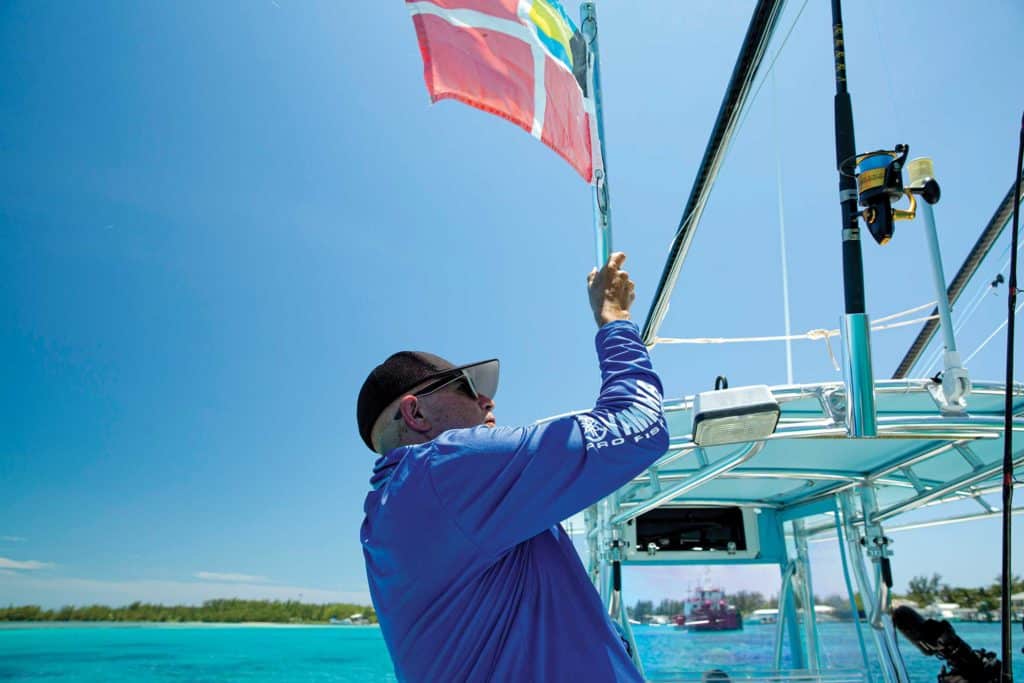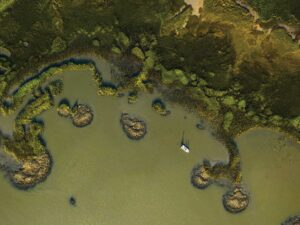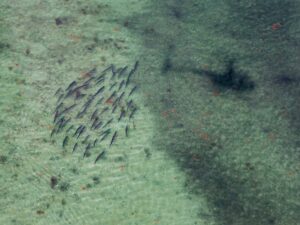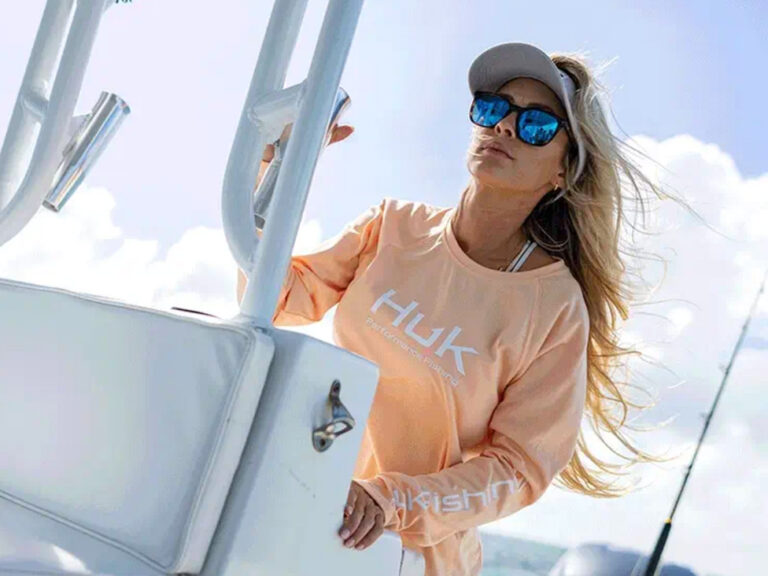
Many boating anglers are tormented by tropical dreams—the kind that feature white sand, tuna-rich, sapphire waters, and lobster-encrusted coral reefs. Those vivid images replaying in their minds suggest the Bahamas, so many of the afflicted buy boats based on their overnighting amenities and seaworthiness, anticipating a crossing to the islands.
Summer ranks as the top time to trek across the Gulf Stream. This year, due to the urgent itch to travel and the uptick in boat sales spurred by the pandemic, the Bahamas could see a major surge in boat traffic. At the same time, rules for visiting the islands by boat remain fluid, dependent on COVID-19 statistics. Visit bahamas.com/getting-here for the current regulations.
Planning for any crossing should include three main elements: creating a checklist for boat maintenance, safety gear, tools and supplies; charting a course using an app or navigation software; and preparing customs and immigration paperwork.
Seasoned captains and fishermen with dozens of crossings under their belts offer valuable tips to prepare your vessel. “You’ll want to look at all your safety gear to make sure it’s in good condition and, in my opinion, you should never cross without an EPIRB,” says Capt. Dean Panos of Miami, who has crossed to the Bahamas six to 12 times a year for nearly three decades and, at press time, was planning a trip to Chub Cay on his current boat—a SeaVee 370Z with triple Mercury 300s.
Panos also recommends buying a vessel-tracking system. He uses AtlasTrax, which allows family at home to monitor his path. Longer-ranging trips necessitate a satellite phone, which you can rent. A backup handheld GPS also makes sense, in case something goes wrong with your electronics.
Keep a waterproof boat bag handy to hold your boat registration, insurance papers and passports. You’ll also want a good first-aid kit, and you need to carry quarantine and Bahamas courtesy flags. The former should be flown as soon as you’re in sight of land.
“If I’m close to needing engine service, I get that done before the season,” says Carlos Carbonell, a South Florida angler who describes himself as a weekend-warrior dad. He makes three to four Bahamas trips a year on his Invincible 39. “I tell the mechanic to give me spare spark plugs and fuel filters—a kit of things—for my three outboards. We also take spare props.”
Panos suggests anglers with triple-outboard setups bring spare right and left props downsized slightly in pitch. Lower-pitch props help you plane and run on two engines, if necessary. He also carries five or six extra fuel filters because gasoline at some remote-island ports might be contaminated.
Be sure to pack a toolkit to do basic repairs, and create a checklist for the remaining gear and tackle you want to take. That should include power cords, extra dock lines, and cleaning supplies.
Experts recommend crossing with a buddy boat when possible. But if you can’t, file a float plan with someone at home. That might be as simple as outlining a route, with departure and arrival times, and island contacts.
Panos uses the Navionics app to plan trips. He downloads the route to his onboard electronics and leaves a copy with the family.
Be sure to register your EPIRB and any personal locator beacons online with NOAA, and make sure you provide updated emergency contacts.

As the boat owner, you must fill out the forms that allow you into the Bahamas for your vessel and crew. You can find the customs clearance forms, COVID-19 Travel Health Visa (which, at press time, required a negative test no more than five days prior to arrival), and cruising permit information at bahamas.com. Submit the information, pay the entry fee (based on vessel size), and print these forms before you leave.
You still must meet with Bahamas customs and immigration personnel when you arrive. Only the captain can leave the vessel and clear the boat and crew. When you depart, you must return your completed immigration form.
Read Next: Safe Passage to Bahamas
Panos recommends you initiate the paperwork you’ll need for US Customs ahead of time, using the CBP Roam app (cbp.gov), available free from Apple and Google Play stores.
“Before you leave [the States], pre-load the passengers and passport photos. When you clear back in, report your arrival via the app,” Carbonell says. “The process has gotten a lot better.”
By the Book
Once you leave the dock en route to the Bahamas, don’t even think about fishing before clearing customs. You need both a fishing license and an approved travel permit from customs before you can legally wet a line.
You must fly a yellow quarantine flag when entering the Bahamas. Hoist it when you sight land. Once you’ve cleared customs, it can be supplanted with the Bahamas courtesy flag, if you choose. Upon arrival, only the captain may leave the boat until paperwork is in order. Everyone on board must show a valid passport. To simplify the entry process, obtain fishing licenses and travel permits before you go at gooutdoorsbahamas.com.









